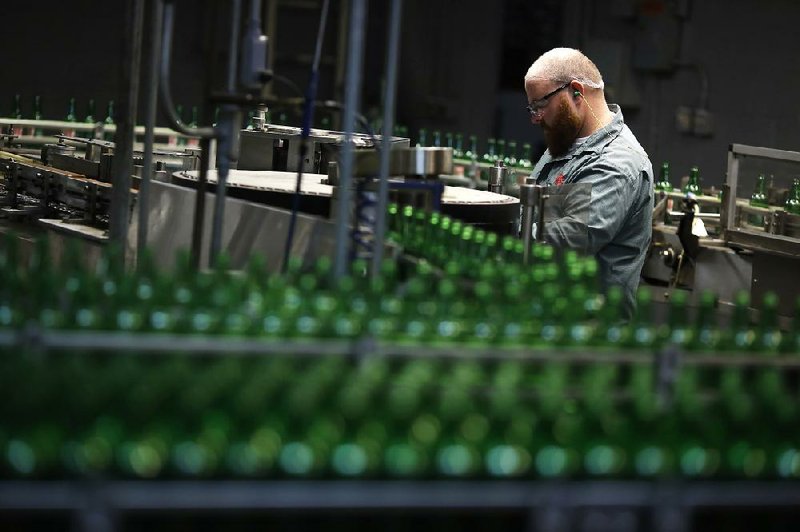WASHINGTON - U.S. wholesale businesses increased their stockpiles in October by the most in two years as their sales rose sharply.
Wholesale stockpiles grew 1.4 percent in October, the Commerce Department reported Tuesday. That’s nearly triple the 0.5 percent gain in September and the biggest monthly gain since October 2011. Sales at the wholesale level increased 1.0 percent in October, the most in five months. Sales rose 0.8 percent in September.
Rising stockpiles are a sign of growth because it means factories have produced more goods. Robust restocking drove about half of the 3.6 percent annualized economic growth in the July-September quarter.
“The rise in inventories spread out across a broad swath of goods combined with the solid increase in sales is quite encouraging,” Thomas Simons, an economist at Jefferies LLC in New York, said in a research note. “[The] report bodes well for further inventory accumulation” in the fourth quarter.
Some economists had predicted that growth would slow in the October-December quarter to an annual rate of 2 percent or less as companies reduced their inventory building in response to slowing demand. But the strong rise in October suggests businesses expect to see solid sales in the coming months.
The gain could prompt some to rethink their forecasts. But if sales falter, companies could be left with large stockpiles of unwanted goods. That could ultimately slow restocking and weigh on overall growth, if not in the fourth quarter then at the start of next year.
Pierre Ellis, an economist at Decision Economics, said he expects overall growth will slow as businesses cut back on restocking. But that may not happen until the first quarter of next year.
The October increase pushed wholesale stockpiles up to a seasonally adjusted $514.1 billion. That’s 3.3 percent higher than the same month last year.
In October, stockpiles held by auto dealers surged 2.7 percent. Automakers reported solid sales in November and are on pace for their best sales year in almost seven years.
Economists are hopeful that growth will rebound next year, helped by a pickup in hiring, gradually improving wages and rising household wealth.
The National Association for Business Economics said in a forecast released Monday that the economy should grow 2.5 percent in 2014, higher than the association’s forecast of 1.7 percent growth this year.
The business economists are more optimistic about next year even though they expect the Federal Reserve will begin to reduce its $85 billion per month in bond purchases. The bond purchases are intended to lower long-term interest rates and encourage more borrowing and spending.
But economists say that even if long-term rates start to rise, the economy will be getting support from steady gains in employment.
Sales will be stronger at U.S. manufacturers in 2014 after revenue this year has fallen short of projections, according to a survey by the Institute for Supply Management released Tuesday.
Purchasing managers at manufacturers estimate a 4.4 percent increase in sales in 2014. Revenue rose 3.4 percent this year. The group’s forecast in April showed purchasing managers projected a 4.8 percent advance in revenue for 2013.
“Manufacturing purchasing and supply executives expect to see continued growth in 2014,” Bradley Holcomb, chairman of the group’s factory committee, said in a statement. “They are optimistic about their overall business prospects for the first half of 2014, and are even more optimistic about the second half.” Information for this article was contributed by Martin Crutsinger of The Associated Press and Jeanna Smialek, Victoria Stilwell and Michelle Jamrisko of Bloomberg News.
Business, Pages 25 on 12/11/2013

